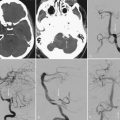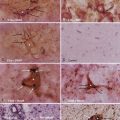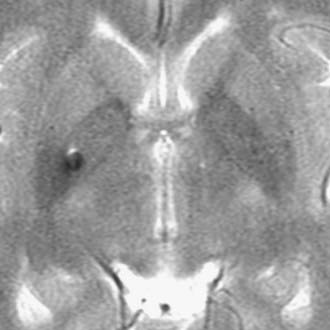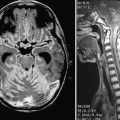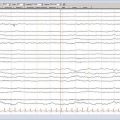CHAPTER 159 Evidence-Based Approach to the Treatment of Facial Pain
Evidence-based medicine (EBM) is a concept introduced in the 1970s to improve the standard of health care, and it has been successfully implemented since the last decade of the past century in many fields of medicine. Its principal aim is to ensure that a given diagnostic procedure or treatment is as accurate, effective, and unbiased as possible. In practice, EBM is the conscientious, explicit, and judicious use of current best evidence in making decisions about the care of individual patients.1 The strength of evidence can understandably vary, and several hierarchic scales have been developed to measure it.2–6 The strongest evidence comes from adequately powered randomized controlled trials with a design that limits bias and ensures the objectivity of measurement of outcome. The weakest evidence comes from uncontrolled case series, case reports, and expert opinion.4,5 Large databases exist to show that EBM has become the “gold standard” in drug development. For clinicians, evidence-based guidelines abound, with regular contributions from practicing clinicians, such as the Cochrane Library. There is an increasing drive to ensure that novel diagnostic techniques are adopted following validation based on strong evidence. Many nondrug, noninterventional treatments have similarly been subjected to critical EBM appraisal. The surgical community seems to have adopted a more circumspect approach.7,8 There are, however, good reasons to proceed with EBM, and in no other field of medicine more than the surgical management of chronic pain.6
There are three major reasons why any treatment for chronic pain should be subjected to as meticulous scrutiny as possible. First, chronic pain is notoriously fluctuating, with many conditions varying over time significantly in intensity, and with some conditions known to go into remission. Second, for chronic pain, many easily accessible treatments exist, making it virtually impossible to ascertain without a controlling arm from case series which intervention ultimately has been effective. Third, in chronic pain, the placebo reaction is greater than in any other condition, except depression, explaining up to 44% of the treatment response.9
The resistance toward application of EBM to clinical practice stems from doubts about its suitability to surgical research, especially because of the obvious difficulty in designing trials that would allow random allocation of patients to two different procedures (active or sham) with an independent, blinded assessment of outcome. Yet, such studies have been done, with results that have immediate clinical applicability. Good examples include controlled trials of arthroscopic débridement of the osteoarthritic knee10 and adhesiolysis in abdominal pain11—both unequivocal in showing the limitations of these widely used treatments. In trigeminal neuralgia (TN), a controlled trial showed lack of efficacy of pulsed radiofrequency compared with conventional radiofrequency lesioning of the trigeminal ganglion.12 Studies on laminectomy in sciatica or spinal cord stimulation in failed back surgery syndrome show that even when sham controlled trials are not possible, well-designed comparative trials are, and they yield results that generally are helpful to the practicing clinician.13,14
It is obvious that there are clinical research questions that cannot be addressed with studies attaining the highest rank in the hierarchy of EBM. However, quality improvement is almost always possible from the routine uncontrolled case series presentations. Hierarchic assessment of strength of evidence is mostly helpful in only what it is supposed to do: to outline the limits and possibilities of reduction of bias and assessment of effect sizes; but it should not be considered as ultimately decisive.3 If the signal-to-noise ratio is sufficiently high, case studies may well suffice.15 In chronic pain, there are very few such circumstances, although hip replacement for osteoarthritis probably comes close.
Systematic reviews remain the strongest tool for those employing EBM to answer a clinical question posed.3 In this chapter, I summarize results from such a systematic review, published in 2008, and comment on issues not raised while highlighting some further targets for research.
Implementation of Evidence-Based Medicine in Trigeminal Neuralgia
In 2003, the American Academy of Neurology (AAN) and European Federation of Neurological Societies (EFNS) set up a Task Force consisting of practicing clinicians with a track record of research in facial pain. They were invited to conduct a systematic review of the medical literature on TN, using established criteria for assessment of the strength of evidence supporting the use of diagnostic and therapeutic measures.4,5 In accordance to the AAN Practice Parameter, the Task Force independently chose the issues related to TN it thought had relevant clinical importance. The strength of evidence was assessed using criteria shared by both organizations (Table 159-1). The results of the review were translated into a set of practice recommendations that were accepted by the scientific committees of both societies.16,17 Review consisted of published research on the topic up to 2006.
TABLE 159-1 American Academy of Neurology (AAN) and European Federation of Neurological Societies (EFNS) Guidelines for Classification of Strength of Evidence for Therapeutic Interventions
| CLASS | AAN CLASSIFICATION | EFNS CLASSIFICATION |
|---|---|---|
| I |
* Objective outcome measurement: an outcome measure that is unlikely to be affected by an observer’s (patient, treating physician, investigator) expectation or bias (e.g., blood tests, administrative outcome data).
Diagnosis of Trigeminal Neuralgia
For diagnostics, the questions were related to the differential diagnosis of classic (idiopathic) TN and symptomatic TN and to the role of imaging in showing the presence of a structural lesion.16,17 Limited evidence from a handful of class III studies suggested that routine neuroimaging identifies a structural cause (other than a compression by a blood vessel) in 15% of patients with TN. The authors recognize a possible bias that may result from all reports coming from specialized centers. However, because this is the best evidence available, there can hardly be any need to question the practice of neuroimaging of patients with the clinical diagnosis of TN.
Whether dedicated magnetic resonance imaging (MRI) should be used to show the presence of vascular compression in a patient with a clinical diagnosis of TN is still debated. The authors reviewed five class I and two class III studies published by 2006 and noted considerable inconsistency in the results (e.g., sensitivity ranging from 52% to 100% and specificity from 29% to 93%, when findings at operation were compared with blinded assessment of the preoperative scan). Because of this, no recommendation could be given. As techniques continue to improve, this recommendation may eventually change. A drawback is that a positive MRI is commonplace in the general population. Whether preoperative MRI influences long-term outcome from microvascular decompression (MVD) is not known at present. It is possible with future improvement in resolution and imaging techniques that MRI may help determine the clinical significance of a compression and its impact on the nerve, resulting in improvement in outcome.18
No attempt has been made to look for evidence for a gold standard to diagnose TN. There remains a general agreement among clinicians that no specific test is capable of it—the diagnosis of TN remains strictly clinical and is based to a great extent on the verbal description given by the patient. The criteria for the clinical diagnosis have been agreed on by the International Headache Society19 and are similar but not identical with the current International Association for the Study of Pain definition. Although several validated questionnaires exist for differential diagnosis and characterization of neuropathic pain, they have not been shown to be useful in TN.
Equally, the concept of “atypical” TN was not included in the deliberations. Although some studies suggest that TN with atypical features is less responsive to therapeutic interventions,20,21 and may even be considered an extension of the “typical” form, there is insufficient agreement of what criteria should be used to distinguish the two conditions.
Treatment of Trigeminal Neuralgia
Surgery
Surgical treatments have always dominated the management of TN. Deciding when to offer surgery to a patient with TN has an obvious importance. However, no studies were identified that would have been of use to answer this question.16,17 One follow-up study on the long-term efficacy of carbamazepine suggested that about 50% of patients had switched to another form of therapy after several years of treatment. No published studies have prospectively compared long-tem results of early compared with late surgical intervention.
A large number of case series have been published regarding percutaneous ganglion-level neuroablative procedures involving thousands of patients, almost all class IV level. There were no controlled studies; of the case series, two on radiofrequency lesioning, one on balloon compression, and one on glycerol rhizolysis used an independent assessor of the long-term outcome and therefore reached a class III level. Of the latter studies, no preference could be afforded to any. At 1 year 87% and at 3 years 50% to 70% were pain free, whereas at 5 years, one half of the patients had relapsed. These percentages are less impressive than those following MVD (see later), but because no head-to-head comparison studies have been published, the real difference in effectiveness remains unknown, and follow-up data from centers that employ all methods vary considerably.22,23
Gamma Knife surgery (stereotactic radiosurgery) appears to afford pain relief similar to percutaneous ganglion-level procedures, with up to 69% of patients in remission at 1 year and 52% at 3 years (based on three class III studies). This procedure has the advantage of being suitable for patients who cannot be anesthetized. Sensory abnormalities in the three class III studies mentioned previously were reported in 6% of patients. However, several large class IV studies reported sensory changes in 9% to 37% of patients (with spontaneous improvement over time), and troublesome sensory loss and paresthesia occurred in 6% to 13% of patients.16,17
Of all procedures, MVD has steadily gained in popularity and in many centers is considered the surgical procedure of choice for the treatment of TN. Based on five class III studies, the mean percentages for remission at 1, 3, and 5 years were 85%, 77%, and 75%, respectively.16,17 These figures are clearly superior to those regarding other surgical interventions for TN. However, because no prospective comparative studies have ever been conducted, one cannot show evidence for the preference of choice of one over the other. Many centers have adopted MVD as their main approach, and these centers report generally better outcomes than less experienced centers.24
Putting the Evidence Into Clinical Context
Clinical reality dictates that the first therapeutic intervention in TN is pharmacologic. The drugs to be considered as first-line treatment are carbamazepine and oxcarbazepine. Only limited evidence exists to guide the clinician if these drugs fail, but a reasonable alternative would be either baclofen or lamotrigine (as an add-on medication). Use of medications effective in other types of neuropathic pain is highly discretionary. An alternative is to consider the patient’s TN to be refractory to medication and to offer surgery. A survey on patient preference suggests that advice of early neurosurgical intervention would be received sympathetically.25 The choice of the surgical method depends on a number of factors, including the patient’s suitability for and willingness to undergo a particular procedure. As a general rule, the EFNS Task Force advises that percutaneous ganglion-level procedures can be performed in elderly patients but engender common facial sensory disturbances, MVD provides the longest lasting pain relief but involves some risk for major neurological complications, and Gamma Knife is the least invasive and safest procedure but is associated with a month’s delay of onset of pain relief.
Use of Evidence-Based Medicine for Evaluation of Future Management of Trigeminal Neuralgia
One wonders if the paucity of high-quality controlled trials in TN reflects traditional values, limited resources, perceived difficulty in conducting trials, or lax regulatory policies. An example in point is the introduction of Gamma Knife surgery in the 1990s. Given its mode of action, very much based on neuroablation, one would in hindsight see it as an opportunity to judge its genuine value in a comparative trial with percutaneous ganglion-level procedures. Such a study, unfortunately, was never carried out. Yet, following pilot data, power calculations would have been possible, and patient recruitment would likely have been successful, judging from large case series published soon after the introduction of Gamma Knife surgery. Although there are obvious benefits of this method, including no need for anesthesia and rapid recovery from the procedure, there are also obvious disadvantages, such as delayed onset of effect, expense, and restrictions regarding repeat treatment in case of recurrence of pain. A large prospective, pragmatic study comparing just one percutaneous technique with Gamma Knife surgery would by now have given a much clearer picture of the advantages and disadvantages of each treatment and, most importantly, a sound platform for physicians to choose the most suitable treatment for their patients. Lack of comparative data prevents an objective assessment of whether Gamma Knife offers a real advantage over other methods—and this information is unlikely to come from other than controlled trials. A good example of a more critical appraisal of a new method is provided by Erdine and colleagues.12 They compared pulsed radiofrequency to conventional radiofrequency rhizolysis of the trigeminal ganglion in a prospective controlled trial and showed a very significant difference in outcome at as early as the 1-year follow-up.
Another unanswered question relates to of the role of MVD. Despite its ostensible superiority that comes from several large case series with a long follow-up16,17 and surveys of patient preferences,26 the acid test of a controlled comparator trial still awaits. Clinical institutions in which MVD is not regularly practiced can justifiably continue with percutaneous methods. For example, there are several pain anesthesiologists in Europe who feel their ability to carry out such procedures in their own local hospital without delay, safely and effectively, offers a solution on par with MVD carried out in a regional neurosurgery unit with known long waiting lists. Without properly controlled trials, one would not know whether this practice is in fact justified or whether the patients are ultimately receiving inferior treatment. A randomized two-arm trial with a possibility of crossing over to the other arm after a given time is entirely within possibility and could ultimately solve this uncertainty.
Bandopadhayay P, Goldschlager T, Rosenfeld JV. The role of evidence-based medicine in neurosurgery. J Clin Neurosci. 2008;15:373-378.
Brainin M, Barnes M, Baron J-C, et al. Guidelines for preparation of neurological management guidelines by EFNS scientific task forces. Eur J Neurol. 2004;11:577-581.
Brisman R. Gamma knife surgery with dose of 75 to 76.8 Gray for trigeminal neuralgia. J Neurosurg. 2004;100:848-854.
Canadian Task Force on Periodic Health Examination. The periodic health examination. Can Med Assoc J. 1979;121:1193-1254.
Centre for Evidence-Based Medicine. Levels of evidence. www.cebm.net/levels_of_evidence.asp. (accessed 24 June 2008)
Cruccu G, Gronseth G, Alksne J, et al. AAN-EFNS guidelines on trigeminal neuralgia management. Eur J Neurol. 2008;15:1013-1028.
Edlund W, Gronseth G, So Y, Franklin G. Clinical Practice Guideline Process Manual. St. Paul, MN: American Academy of Neurology. 2004. www.aan.go/go/guidelines/development.
Erbay SM, Bhadelin RA, O’Callaghan M, et al. Nerve atrophy in trigeminal neuralgia: non-invasive confirmation at MRI imaging—initial experience. Radiology. 2006;238:689-692.
Erdine S, Ozyalcin NS, Cemier A, et al. Comparison of pulsed radiofrequency with conventional radiofrequency in the treatment of idiopathic trigeminal pain. Eur J Pain. 2007;11:309-313.
Glasziou P, Chalmers I, Rawlins M, McCulloch P. When are randomised controlled trials unnecessary? Picking signals from noise. BMJ. 2007;334:349-351.
Glasziou P, Vandenbroucke J, Chalmers I. Assessing the quality of research. BMJ. 2004;328:39-41.
Gronseth G, Cruccu G, Alksne J, et al. Practice Parameter: The diagnostic evaluation and treatment of trigeminal neuralgia. Report of the Quality Standards Subcommittee of the American Academy of Neurology and European Federation of Neurological Societies. Neurology. 2008;71:1183-1190.
Haines SJ. Evidence-based neurosurgery. Neurosurgery. 2003;52:36-47.
Headache Classification Committee of the International Headache Society. The International Classification of Headache Disorders. Cephalalgia. 2004;24(suppl 1):1-150.
Kalkanis SN, Eskander EN, Canter BS, Barker TGII. Microvascular decompression surgery in the United States 1996 to 2000: mortality rates, morbidity rates, and the effect of hospital and surgeon volumes. Neurosurgery. 2003;52:1251-1265.
Kumar K, Taylor RS, Jacques S, et al. Spinal cord stimulation versus conventional medical management for neuropathic pain. A multicentre randomised controlled trial in patients with failed back surgery syndrome. Pain. 2007;132:179-188.
Mosley JB, O’Malley K, Petersen JD, et al. A controlled trial of arthroscopic surgery for osteoarthritis of the knee. N Engl J Med. 2002;347:81-88.
Quessy SN, Rowbotham MC. Placebo response in neuropathic pain trials. Pain. 2008;138:479-483.
Sackett DL, Rosenberg WM, Gray JA, et al. Evidence-based medicine: what it is and what it isn’t. BMJ. 1996;312:71-72.
Spatz AL, Zakrzewska JM, Kay EI. Decision analysis of medical and surgical treatment for trigeminal neuralgia: how patients’ evaluation of benefit affect the utility of treatment decision. Pain. 2007;131:302-310.
Swank DJ, Swank-Bordewijk SCG, Hop WCJ, et al. Laparoscopic adhesiolysis in patients with chronic abdominal pain. A blinded randomised controlled multi-centre trial. Lancet. 2003:1247-1251.
Taha JM, Tew JMJr. Comparison of surgical treatments for trigeminal neuralgia: re-evaluation of radiofrequency rhizotomy. Neurosurgery. 1996;38:865-871.
Tronnier VM, Raske D, Hamer J, et al. Treatment of idiopathic trigeminal neuralgia. Comparison of long-term outcome after radiofrequency rhizotomy and microvascular decompression. Neurosurgery. 2001;48:1261-1267.
Tyler-Kabara EC, Kassam AB, Horowitz MH, et al. Predictors of outcome in surgically managed patients with typical and atypical trigeminal neuralgia: comparison of results following microvascular decompression. J Neurosurg. 2002;96:527-531.
Weinstein JN, Lurie JD, Tosteson TD, et al. Surgical vs. non-operative treatment for lumbar disk herniation: the Spine Patient Outcome Research Trial (SPORT): a randomized trial. JAMA. 2006;296:2441-2450.
Zakrzewska JM, Lopez BC, Kim SE, Coakham H. Patient reports of satisfaction after microvascular decompression and partial sensory rhizotomy for trigeminal neuralgia. Neurosurgery. 2005;56:1304-1311.
1 Sackett DL, Rosenberg WM, Gray JA, et al. Evidence-based medicine: what it is and what it isn’t. BMJ. 1996;312:71-72.
2 Canadian Task Force on Periodic Health Examination. the periodic health examination. Can Med Assoc J. 1979;121:1193-1254.
3 Glasziou P, Vandenbroucke J, Chalmers I. Assessing the quality of research. BMJ. 2004;328:39-41.
4 Brainin M, Barnes M, Baron J-C, et al. Guidelines for preparation of neurological management guidelines by EFNS scientific task forces. Eur J Neurol. 2004;11:577-581.
5 Edlund W, Gronseth G, So Y, Franklin G. Clinical Practice Guideline Process Manual. St. Paul, MN: American Academy of Neurology. 2004.www.aan.go/go/guidelines/development.
6 Centre for Evidence-Based medicine. Levels of evidence. www.cebm.net/levels_of_evidence.asp. (accessed 24 June 2008)
7 Haines SJ. Evidence-based neurosurgery. Neurosurgery. 2003;52:36-47.
8 Bandopadhayay P, Goldschlager T, Rosenfeld JV. The role of evidence-based medicine in neurosurgery. J Clin Neurosci. 2008;15:373-378.
9 Quessy SN, Rowbotham MC. Placebo response in neuropathic pain trials. Pain. 2008;138:479-483.
10 Mosley JB, O’Malley K, Petersen JD, et al. A controlled trial of arthroscopic surgery for osteoarthritis of the knee. N Engl J Med. 2002;347:81-88.
11 Swank DJ, Swank-Bordewijk SCG, Hop WCJ, et al. Laparoscopic adhesiolysis in patients with chronic abdominal pain. A blinded randomised controlled multi-centre trial. Lancet. 2003;361:1247-1251.
12 Erdine S, Ozyalcin NS, Cemier A, et al. Comparison of pulsed radiofrequency with conventional radiofrequency in the treatment of idiopathic trigeminal pain. Eur J Pain. 2007;11:309-313.
13 Kumar K, Taylor RS, Jacques S, et al. Spinal cord stimulation versus conventional medical management for neuropathic pain. A multicentre randomised controlled trial in patients with failed back surgery syndrome. Pain. 2007;132:179-188.
14 Weinstein JN, Lurie JD, Tosteson TD, et al. Surgical vs. non-operative treatment for lumbar disk herniation: the Spine Patient Outcome Research Trial (SPORT): a randomized trial. JAMA. 2006;296:2441-2450.
15 Glasziou P, Chalmers I, Rawlins M, McCulloch P. When are randomised controlled trials unnecessary? Picking signals from noise. BMJ. 2007;334:349-351.
16 Gronseth G, Cruccu G, Alksne J, et al. Practice Parameter: the diagnostic evaluation and treatment of trigeminal neuralgia: Report of the Quality Standards Subcommittee of the American Academy of Neurology and European Federation of Neurological Societies. Neurology. 2008;71:1183-1190.
17 Cruccu G, Gronseth G, Alksne J, et al. AAN-EFNS guidelines on trigeminal neuralgia management. Eur J Neurol. 2008;15:1013-1028.
18 Erbay SM, Bhadelin RA, O’Callaghan M, et al. Nerve atrophy in trigeminal neuralgia: non-invasive confirmation at MRI imaging—initial experience. Radiology. 2006;238:689-692.
19 Headache Classification Committee of the International Headache Society. The International Classification of Headache Disorders. Cephalalgia. 2004;24(suppl 1):1-150.
20 Tyler-Kabara EC, Kassam AB, Horowitz MH, et al. Predictors of outcome in surgically managed patients with typical and atypical trigeminal neuralgia: comparison of results following microvascular decompression. J Neurosurg. 2002;96:527-531.
21 Brisman R. Gamma knife surgery with dose of 75 to 76.8 Gray for trigeminal neuralgia. J Neurosurg. 2004;100:848-854.
22 Taha JM, Tew JMJr. Comparison of surgical treatments for trigeminal neuralgia: re-evaluation of radiofrequency rhizotomy. Neurosurgery. 1996;38:865-871.
23 Tronnier VM, Raske D, Hamer J, et al. Treatment of idiopathic trigeminal neuralgia. Comparison of long-term outcome after radiofrequency rhizotomy and microvascular decompression. Neurosurgery. 2001;48:1261-1267.
24 Kalkanis SN, Eskander EN, Canter BS, Barker TGII. Microvascular decompression surgery in the United States 1996 to 2000: mortality rates, morbidity rates, and the effect of hospital and surgeon volumes. Neurosurgery. 2003;52:1251-1265.
25 Zakrzewska JM, Lopez BC, Kim SE, Coakham H. Patient reports of satisfaction after microvascular decompression and partial sensory rhizotomy for trigeminal neuralgia. Neurosurgery. 2005;56:1304-1311.
26 Spatz AL, Zakrzewska JM, Kay EI. Decision analysis of medical and surgical treatment for trigeminal neuralgia: how patients’ evaluation of benefit affect the utility of treatment decision. Pain. 2007;131:302-310.


